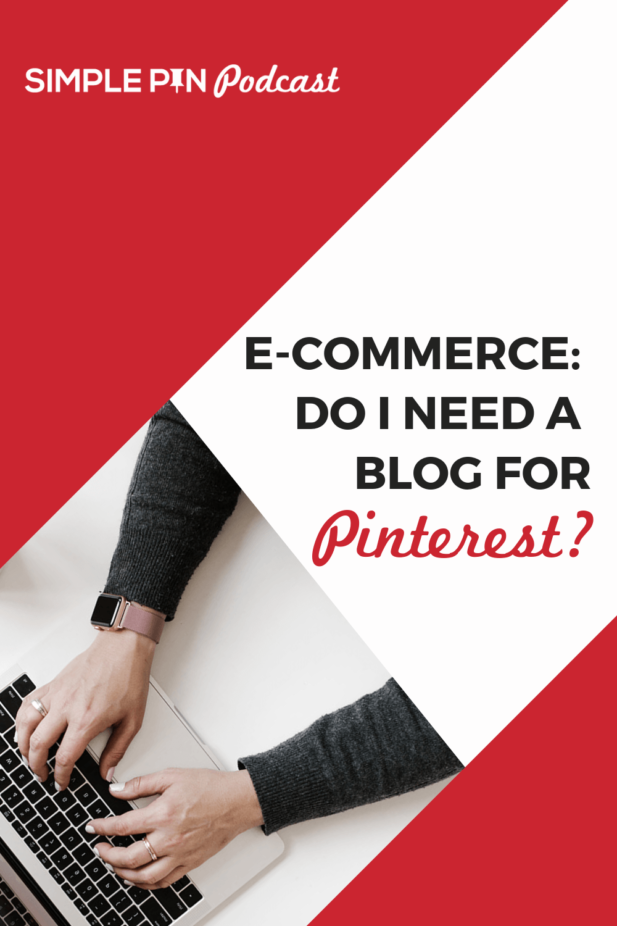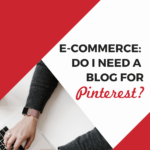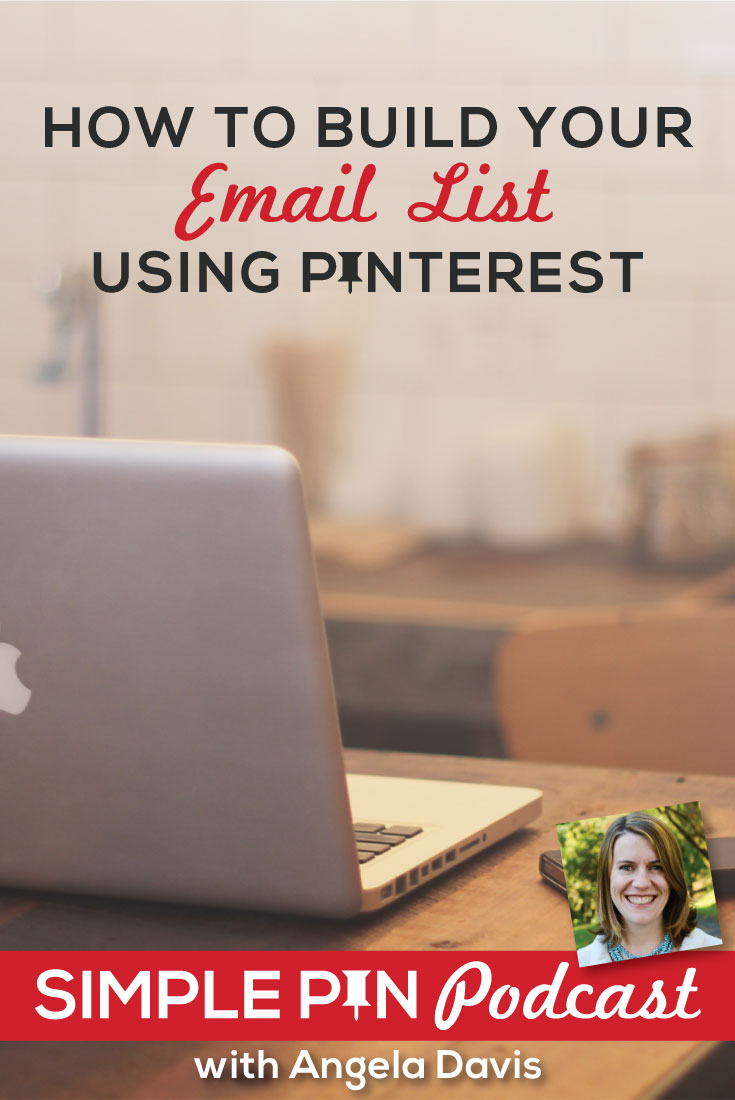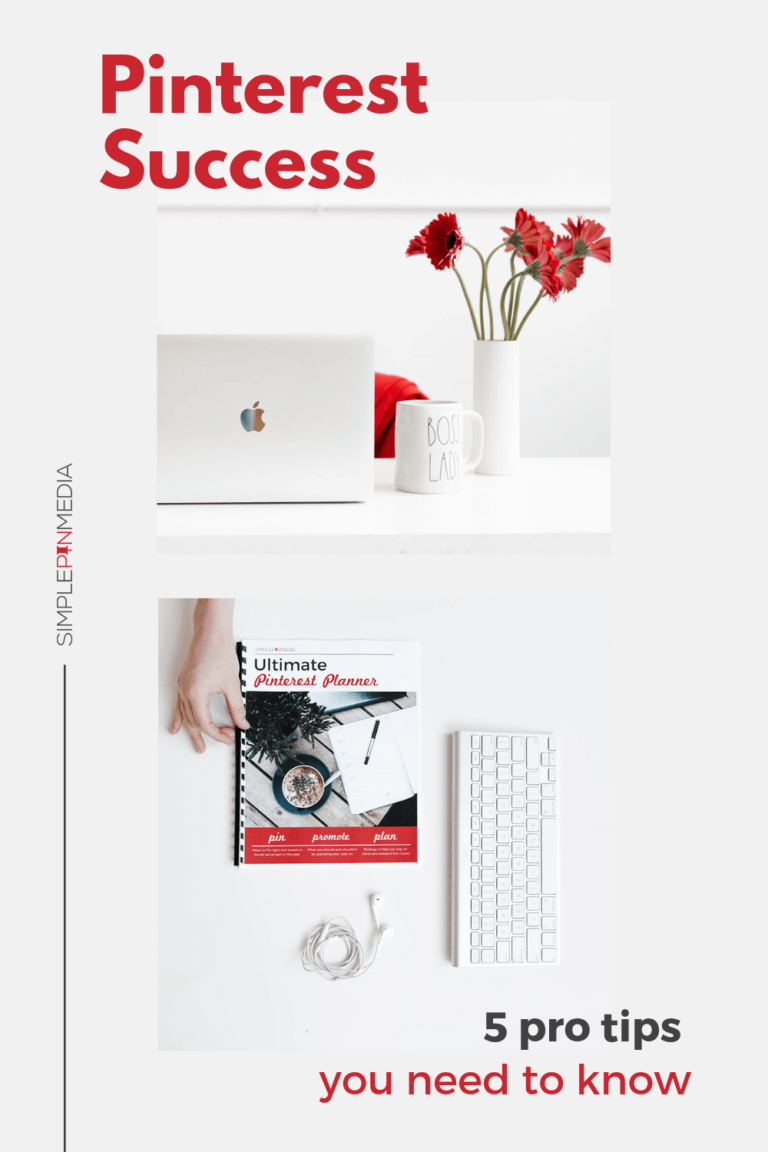Today we’re going to be talking to our e-commerce sellers and product creators. You’re super curious about content creation for Pinterest and want to know whether you need it or not, and how to make it work. You have one burning question: Do product sellers need a blog for Pinterest marketing to work?
Because I’m not a product seller, I decided to invite Minna and Jacqueline from The Product Boss on the show to answer that question. The Product Boss is an amazing company that teaches product sellers how to go about creating, building, and marketing their products to be very successful.
Minna and Jacqueline are the co-hosts of The Product Boss podcast. Jacqueline is a fashion designer who has helped launch over 1,000 fashion brands over the past decade. Minna is the owner of Lil’ Labels, a company that creates washable labels and is a best seller on Amazon.

This post contains affiliate links, which means if you make a purchase through these links, I may receive a small commission at no extra cost to you. Click here to read my full disclosure policy.
Do Product Sellers Need a Blog for Pinterest?
The Product Seller Mindset
The common mindset of a product seller is that they’re never sure how to market. They feel as if they have to be everywhere all the time. Having a blog seems too labor-intensive for product creators because they are looking at bloggers who write long posts or put out content every day. That just seems like too much work, on top of the work of creating products.
But product sellers need to be thinking about the purpose of content marketing which is building that “know, like, and trust factor” — which leads to sales.
Content creation is really just introducing people to you and to your products. — Minna & Jacqueline
I Don’t Have Time For a Blog
The first thing that product sellers need to do is re-think the words blog and blogging. You can treat a blog as a form of content marketing that improves SEO and provides value.
Blogging is different now than it used to be. People used to read lifestyle blogs like they read a newspaper, while they drank their morning coffee. Like newspaper reading, this method of consuming content has mostly died out.
Those lifestyle blogs have been replaced with “micro-blogging” formats, such as stories on Instagram.
Consumers are binging content every day. They binge on podcasts, Instagram stories, Youtube videos. We see it everywhere.
Because of this shift in the way that readers consume content, it’s time to reframe your mindset about blogging.
Blogging Vs. Instagram
So maybe you’re thinking:
“Well, if people are using Instagram as the new blog, can’t I just use that platform instead of a blog?”
Here’s the thing. Blogging on your own platform provides an SEO boost to your site, while providing value to your audience. Building your content out via iTunes and Instagram does not provide that same advantage.
Google, Youtube, and Pinterest are the top three search engines. When you post on your website, you are giving your SEO a massive boost. In this way, you’re able to cultivate long-term growth from blogging that you just can’t on Instagram.
Blogs are an evergreen way of gaining SEO and providing value. — Minna & Jacqueline
Youtube is the second largest search engine. Those who have a successful Youtube channel don’t just post a video and walk away. They include keywords in the video title and description. They also create a blog post about the video and send out an email about it as well.
So even YouTubers still write blog posts. It all goes together. Blogging enables you to put out the words that lead the people back to you.
What Platform Should I Use & What Should I Write About?
Minna and Jacqueline always recommend Shopify. Shopify houses all of your categories or blogs in one place and tells you how many shares you receive on each post. Shopify is also super easy to use and has the ability to grow with you. You can run a multi-million dollar company on the platform.
Related: How to Market Your Shopify Store on Pinterest
You don’t have to add blogging to your day-to-day routine, or even weekly routine. Start out with four posts. These could be as simple as:
• How-to
• Product Spotlight
• Case study
• Message from the owner
Try and do this every 30 days or so. It doesn’t need to be overwhelming.
Related: Using Analytics as a Content Creation Tool
It’s All About Know, Like, and Trust
Minna hired out her Pinterest marketing right away. She already had her strategy going in and provided the graphics for the person she hired. She knew she wanted to bring eyes onto her products from the very beginning, in order to build that “know, like, and trust factor.”
Blogging helps your audience connect with you in a different way. Sharing your stories will help them resonate with you, cultivating the relationship.
The Intent to Buy Timeline
There is a level of intent to buy associated with every platform. Think of this as a timeline with a wallet at the end. The wallet signifies when the customer decides to purchase your product.
Furthest away from that wallet are Pinterest and Instagram. People are using Pinterest and Instagram to explore, plan and dream. They are discovering options, and don’t know exactly what they want until they see it.
When they pinpoint what they want, that brings us a little further down the timeline to the Google and Youtube platforms. When you get to the middle of the intent to buy timeline, the user knows what they want and now they are trying to figure out how to get it.
Closest to the wallet are Amazon, Etsy, and your website. They are going to those places with the intention to buy. (We talked about this more in our 2019 Best Marketing Practices episode a few weeks ago, check that out for more info and a helpful graph).
You can download a of the The Product Boss’s Intent to Buy Cheat Sheet here. It will help you identify more potential objections and get tips on how to overcome them.
Using Pinterest to Create Awareness
While we think Pinterest can work for everyone, there are some sellers who need to dive into Pinterest marketing with the intention of creating awareness for their product/brand and not making sales.
For example, if you are selling candles, what can you blog about?
You can write about the packaging, and what types of homes the candle would look best in or how your candles are non-toxic and a safer, more beautiful solution. There’s always something to talk about.
You need to figure out how your product is unique. We talked about this with Kirsten of Julep Tile in a previous episode on how to use Pinterest to sell physical products. There are big brands that sell tile. But her blog allowed her to tell the story of her tile and connect with her audience to make her stand out in relation to those big brands.
Pinterest and Basketball
How do Pinterest and blogging work together? It’s Simple. Blogging results in more eyes on your product.
There are two types of selling:
• Hard selling – “Buy now! Don’t miss this sale!”
• Value-based selling – Know, Like, and Trust
Hard selling on Pinterest will only work if the user is no longer in the discovery mindset, is ready to purchase, and you can target them with an ad.
Otherwise, you have to build the know, like, and trust factors. This is where email marketing comes into play.
Minna compares this to basketball. Michael Jordan always gave credit to Scottie Pippen for being his “assist” and always passing him the ball, so that he could make the shot.
Pinterest is your “assist” in getting eyes on your product. You (the product owner) are Michael Jordan and it’s your job to sell those people on your product once they arrive on your site.
You can either sell through ads (hard selling) or by email sign up (value-based selling).
Overcoming The User’s Objections
So here’s what we’ve learned so far:
1. Content creation doesn’t have to be hard.
2. Your content is a place to get eyes on your products, warm your audience up & get them on your email list, and to enhance your SEO.
3. It’s another way to connect with your customers.
4. Pinterest serves as the beginning point of the awareness journey.
Your goal with content marketing is to get their email address. Once that’s accomplished, they can get to know your product, you can target them as a customer, and eventually make the sale.
One of the main things you should be focusing on with content creation is overcoming common objections to your product.
Some common objections might be:
• “I don’t know how to use it.”
• “I don’t know if this will work for me.”
• “Is this the best place to buy?”
• “Is it more expensive here?”
• “I don’t want to buy right now.”
Those are the initial objections people have when they first start thinking about buying. When you are creating your posts, you can add in testimonials and customer stories. You can use case studies, a message from the founder/owner, or offer a guarantee to the user.
All of these things reassure the user and overcome their objections, encouraging them to make the purchase.

Repurposing Your Content
Once you create blog content, the beautiful thing is that you can repurpose your content in many ways. Minna loves to use her blog posts in her post-purchase emails to new customers. After someone purchases from her, she sends them an email saying, “Hey, while you wait for your product to arrive, here’s four ways to use it,” and links to a post on her blog. She’ll also tell them about a freebie they can go download.
A week later, she’ll send them another free download and ask them to take 30 seconds and leave her a review. She’s giving them something before asking for the review. Providing that value to the customer makes them want to help you.
By doing this, Minna reinforces their purchase decision continues to provide value even before they receive their package.
For further reading/listening:
- How to Market Your Shopify Store on Pinterest
- How to A/B Test Pinterest Images
- A Simple Strategy for ECommerce Start Ups
- How to Market a Product on Pinterest
Time Stamp:
3:57 – Introducing Minna and Jacqueline
6:00 – What Should My Mindset Be?
8:33 – I Don’t Have Time For a Lifestyle Blog!
11:08 – Blogging Vs. Instagram
12:40 – Blogging and Youtube
14:13 – What Platform Should I Use?
18:25 – Know, Like, and Trust
20:30 – The Intent to Buy Timeline
26:28 – Using Pinterest to Draw Awareness
30:12 – Pinterest and Basketball
32:57 – Overcoming The User’s Objections
38:23 – Post-Purchase Emails








Fantastic web site. A lot oof helpful information here.
I’m sending it to a few friends ans additionally sharing in delicious.
And of course, thanks in your sweat!